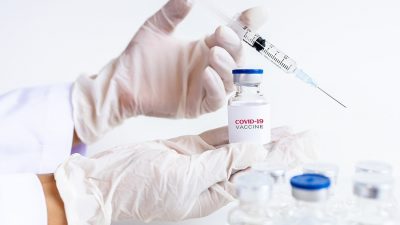Infection Fatality Rate of COVID-19 Inferred from Seroprevalence Data

Abstract
Objective: To estimate the infection fatality rate of coronavirus disease 2019 (COVID-19) from seroprevalence data.
Methods: I searched PubMed and preprint servers for COVID-19 seroprevalence studies with a sample size ≥ 500 as of 9 September, 2020. I also retrieved additional results of national studies from preliminary press releases and reports. I assessed the studies for design features and seroprevalence estimates. I estimated the infection fatality rate for each study by dividing the number of COVID-19 deaths by the number of people estimated to be infected in each region. I corrected for the number of antibody types tested (immunoglobin, IgG, IgM, IgA).
Results: I included 61 studies (74 estimates) and eight preliminary national estimates. Seroprevalence estimates ranged from 0.02% to 53.40%. Infection fatality rates ranged from 0.00% to 1.63%, corrected values from 0.00% to 1.54%. Across 51 locations, the median COVID-19 infection fatality rate was 0.27% (corrected 0.23%): the rate was 0.09% in locations with COVID-19 population mortality rates less than the global average (< 118 deaths/million), 0.20% in locations with 118–500 COVID-19 deaths/million people and 0.57% in locations with > 500 COVID-19 deaths/million people. In people < 70 years, infection fatality rates ranged from 0.00% to 0.31% with crude and corrected medians of 0.05%.
Conclusion: The infection fatality rate of COVID-19 can vary substantially across different locations and this may reflect differences in population age structure and case- mix of infected and deceased patients and other factors. The inferred infection fatality rates tended to be much lower than estimates made earlier in the pandemic.
Introduction
The infection fatality rate, the probability of dying for a person who is infected, is one of the most important features of the coronavirus disease 2019 (COVID-19) pandemic. The expected total mortality burden of COVID-19 is directly related to the infection fatality rate. Moreover, justification for various non-pharmacological public health interventions depends on the infection fatality rate. Some stringent interventions that potentially also result in more noticeable collateral harms1 may be considered appropriate, if the infection fatality rate is high. Conversely, the same measures may fall short of acceptable risk–benefit thresholds, if the infection fatality rate is low.
Early data from China suggested a 3.4% case fatality rate2 and that asymptomatic infections were uncommon,3 thus the case fatality rate and infection fatality rate would be about the same. Mathematical models have suggested that 40–81% of the world population could be infected,4,5 and have lowered the infection fatality rate to 1.0% or 0.9%.5,6 Since March 2020, many studies have estimated the spread of the virus causing COVID-19 – severe acute respiratory syndrome coronavirus 2 (SARS-CoV-2) – in various locations by evaluating seroprevalence. I used the prevalence data from these studies to infer estimates of the COVID-19 infection fatality rate.
*
Note to readers: please click the share buttons above or below. Forward this article to your email lists. Crosspost on your blog site, internet forums. etc.
Our thanks to Mark Taliano for bringing this to our attention.
Featured image is from Health Impact News
*** This article has been archived for your research. The original version from Global Research can be found here ***


